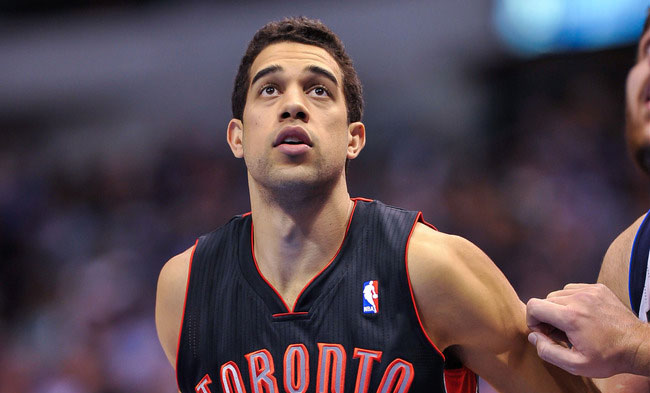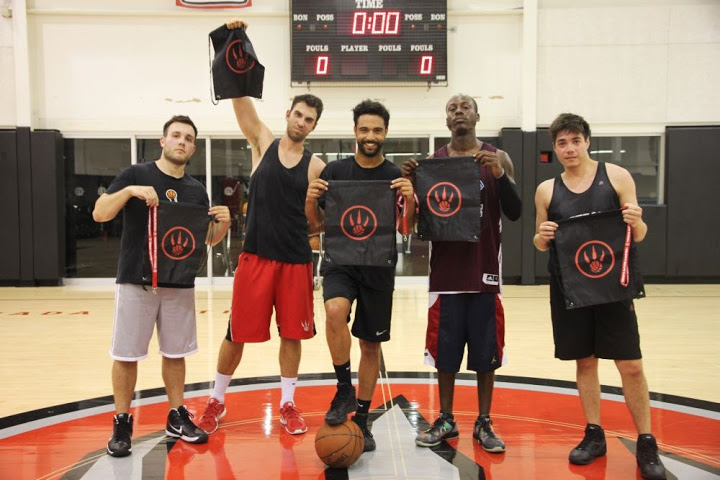What makes a team deep?
I propose a definition something along the lines of satisfying the following conditions, and view the current Raptors roster in this context.
Starters need not log excessive minutes for a team to be effective
This is a fairly obvious one — you can’t have starters play close to 40 minutes and expect to go anywhere, unless that starter is named LeBron James. The general pattern in the NBA is that of substitutes being inserted in the late first quarter, and playing early or midway into the second in a 3/2 or 4/1 split (either 3 or 4 reserves).
This portion of the game, along with its counterpart in the 3rd and 4th quarters is where many a game is won or lost. You might recall yourself lamenting on why Rudy Gay wasn’t brought in earlier, or why Terrence Ross got those minutes over DeMar DeRozan, or any other substitution pattern which causes discomfort in the post-game interviews.
The underlying cause for these substitutions is simply rest. Coaches time their timeouts with TV ones and quarter breaks just to give players that extra breather and prepare them for that key stretch of the game. It’s when the need for rest consistently conflicts with trying to win the game that a team’s depth is up for question, i.e., reserves must be trusted to handle the early part of the fourth quarter, and if key starters must play those minutes, then it’s a losing proposition.
Sustaining quality of play with only one starter out there is something the Raptors will struggle at, only because there isn’t anything close to proven offensive talent on the bench. With Jose Calderon gone, the bench is void of any play-makers or legitimate scoring options, meaning the Raptors are looking like they’ll need to have two of Gay, DeRozan or Lowry to produce any sort of sustainable offense.
Simply put, unless there are some surprises the starters will overreach and compensate for lack of offensive talent on the bench.
The risk of injury to any player (starter or reserve) is mitigated
This is a position-by-position breakdown looking at where injuries can be absorbed without having to play players completely out of position.
Point Guard: Depending on which camp of the D.J Augustin signing you’re on, and how much stock you put into Dwight Buycks’ summer league performance (see the poll on the site right now), your take here may vary. For me, this is a danger-spot for the Raptors because the drop in talent from starter to reserve is considerable. Although the Raptors aren’t short on point guards and injury to Lowry doesn’t result in anybody playing out of position, for me the risk is not sufficiently mitigated. The Raptors are not deep at the point guard, they just happen to have three bodies at the position.
Shooting Guard: Another danger-spot, especially given Terrence Ross’ poor summer league outing. An injury to DeRozan means Terrence Ross starts. Let that sink in.
Power Forward: The Raptors don’t ask a tremendous amount out of their four spot, and whatever Amir Johnson has provided has been seen as a bonus rather than duty. An injury to Johnson would undoubtedly be problematic, but the Raptors have Tyler Hansbrough who can provide the presence of Johnson (last season comparison), only at a lower shooting percentage. If Johnson goes down, it’s a problem, but I don’t think it drastically alters Dwane Casey’s plans. And I haven’t even talked about Quincy Acy and Steve Novak.
Small Forward: Big time problem here, because if Landry Fields is anywhere close to being as ineffective as he was the last two seasons, then the Raptors may as well officially enter the Andrew Wiggins sweepstakes. Backing him further is Quentin Richardson and….Steve Novak?
Center: Another problematic area since if this time around Jonas Valanciunas goes down, Ed Davis isn’t around to allow Amir Johnson to move over and play out of position — not that that was a great situation, but this is really bad. We’re going directly down to Aaron Gray, and the gap between Valanciunas and Gray is expanding faster than the universe.
Match-ups can be dictated; perceived mismatches can be negated
This was an area of, dare I say, strength for the Raptors when they had Andrea Bargnani. Leaving aside the mess Dwane Casey made on those long winter nights with 4-guard lineups, there was potential here to cause teams problems. Of course, we rarely did, but technically the opportunity was there. Even Linas Kleiza when healthy could pose some problems, but this time around the Raptors don’t have great versatility in any one player.
You could argue that Amir Johnson is our most versatile player, but his one-on-one offensive game isn’t one that scares a defense into changing or thinking twice. Contemplating versatility further, you’re now in the conversation of moving Rudy Gay over to the four, or DeRozan over to the three. I’d contend these are relatively easy situations for a defense to adjust to; maybe Gay at the four can cause slower big men some issues but then again, there are enough wings on an NBA roster to contend to these kinds of ploys.
On the other side of the coin, the Raptors have enough athleticism in Gay, DeRozan, Ross, Acy, and Johnson, and a defensive-minded coach so they should be able to contend defensively. Things look shored up on the rebounding side, which means playing zone to slow down a team should not be a major issue, and there aren’t inherently awful defenders where a team can zone-in and exploit them (now that Bargnani is gone, although you can argue DeRozan is quite poor).
With every minute played, a physical advantage is gained
This is a reference to minute distribution and stamina — the longer a game goes, the more depth comes into play. This is the San Antonio advantage where you can essentially have guys who have played 15 minutes in the game play heavy fourth quarter minutes, or when a fresher substitute takes over the reins from the star player to lead the team.
This advantage manifests itself when the coach has an option to completely turn the tables on the opposition by forging productive but rarely-seen lineups late in games. Having strong execution is mandatory for this sort of advantage to arise, as the strength of the wolf is in the pack.
Conclusion
The currently constructed Raptors are relying heavily on starters for offensive production, without much insurance on the bench. X-Factors that can make or break this season are Terrence Ross, Landry Fields, and Dwight Buycks, who can, if they play in the higher spectrum of their capabilities, provide the Raptors the depth that they glaringly lack.
Given the departures of Anderson and Kleiza, and the introduction of the out-of-sorts Richardson, Ross and Fields’ role is expected to be increase. If their previous years production is to be repeated (10.3 and 10.4 PER, respectively), then the Raptors are in trouble. The center position remains to be addressed leaving Valanciunas vulnerable, and the one consistent match-up advantage that the Raptors could at least advertise in Bargnani (on paper), is gone.
It will have to be in their defense that the roster finds depth, which means the pressure’s on Dwane Casey — he doesn’t have the pound-for-pound talent to be truly competitive, leaving him to rely on his wits and of course, hope that under-performers and newcomers shine. Such challenges are part of the deal when you’re a coach in the final year of a contract.




